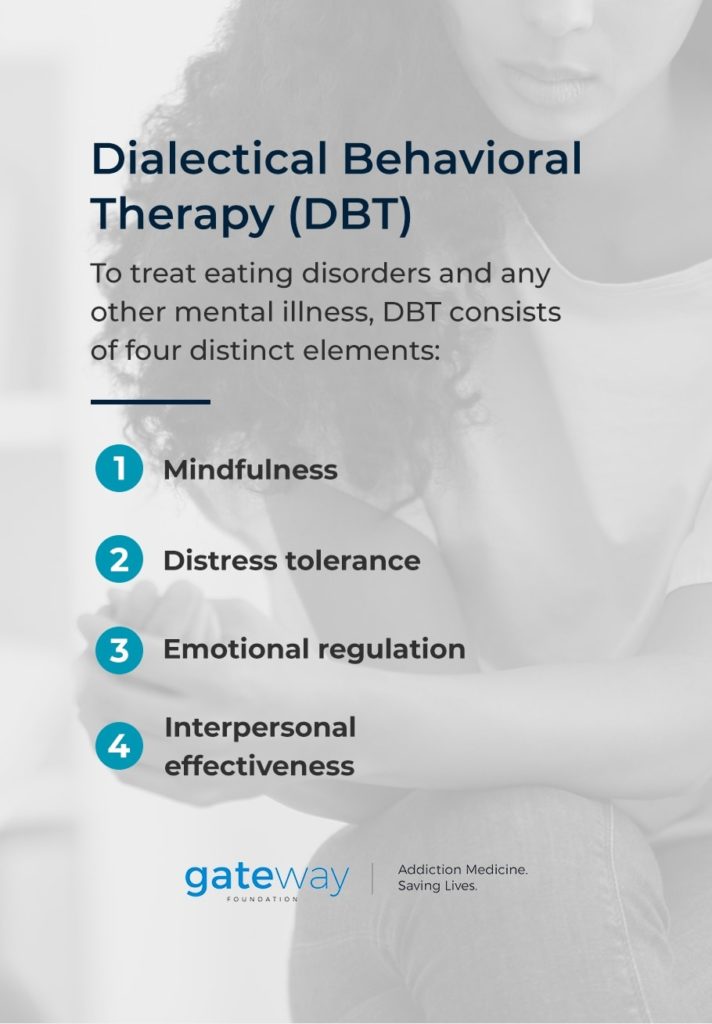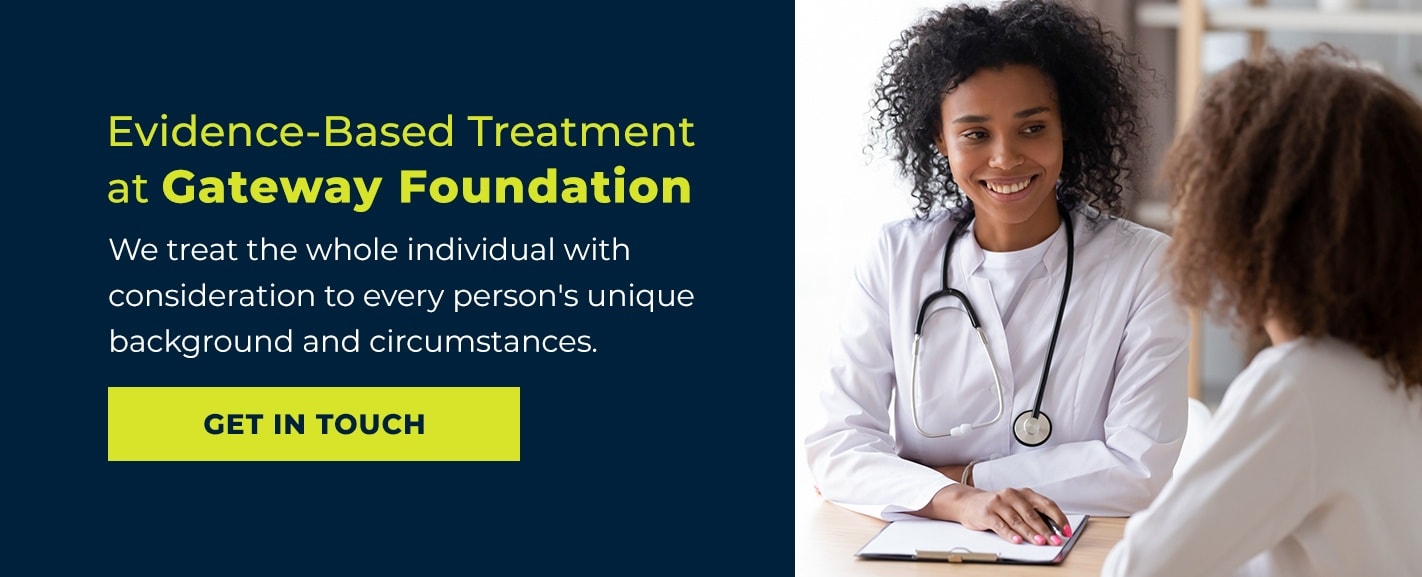- Dec 18
- Addiction TherapyDrug Addiction TreatmentDual Diagnosis Treatment
Eating disorders are a group of mental health conditions that disrupt a person’s eating habits and the way they think and feel about food. The common denominator in eating disorders is that people who have them tend to be obsessive in monitoring their weight and the way their body looks. Millions of people struggle with eating disorders every day. The National Eating Disorders Association reports that 20 million women and 10 million men in the U.S. experience a major eating disorder sometime in their lives.
Many people with eating disorders have to contend with anxiety and depression as well, and this can cause them to turn to drugs or alcohol to try and reduce their physical or emotional pain. However, substance abuse only worsens a person’s problems and can make them feel worse in the long run. Understanding the connection between eating disorders and addiction is key in unlocking recovery from both conditions.
The Link Between Eating Disorders and Addiction
Up to 37% of people with eating disorders also abuse drugs and alcohol compared to 10 percent of the general population who struggle with substance use disorders (SUDs). Part of the issue is that eating disorders themselves often resemble addiction. People feel compelled to perform or avoid certain behaviors related to eating, to the point where they are unable to control themselves. The inability to change unhealthy patterns once they are established may increase the risk of developing a substance use disorder.
- Types of Eating Disorders Associated With Substance Abuse
- Groups Affected by Eating Disorders
- Risk Factors for Eating Disorders
- Shared Risk Factors and Characteristics Between Addiction and Substance Abuse
- Trauma, Eating Disorders and Substance Abuse
- Concurrent Treatment for Substance Abuse and Eating Disorders
- Types of Treatment
- Evidence-Based Treatment at Gateway
Types of Eating Disorders Associated With Substance Abuse
Every type of eating disorder has unique causes and different symptoms which sometimes require different treatment approaches. The most common eating disorders include anorexia nervosa, bulimia and binge-eating disorder.
Anorexia Nervosa
Anorexia nervosa causes people to experience a severe disconnect with what they see in the mirror and how they imagine themselves. They usually see themselves as being overweight, even while they are extremely underweight. Usually, people with anorexia are consumed with the idea of losing even more weight. Anorexia is associated with extreme restrictions on food consumption and may involve excessive exercise as another means of reducing weight. Some people use laxatives in an effort to shed the pounds. Anorexia has devastating effects on the body, including:
- Osteoporosis
- Constipation
- Cardiovascular damage
- Brain damage
- Infertility
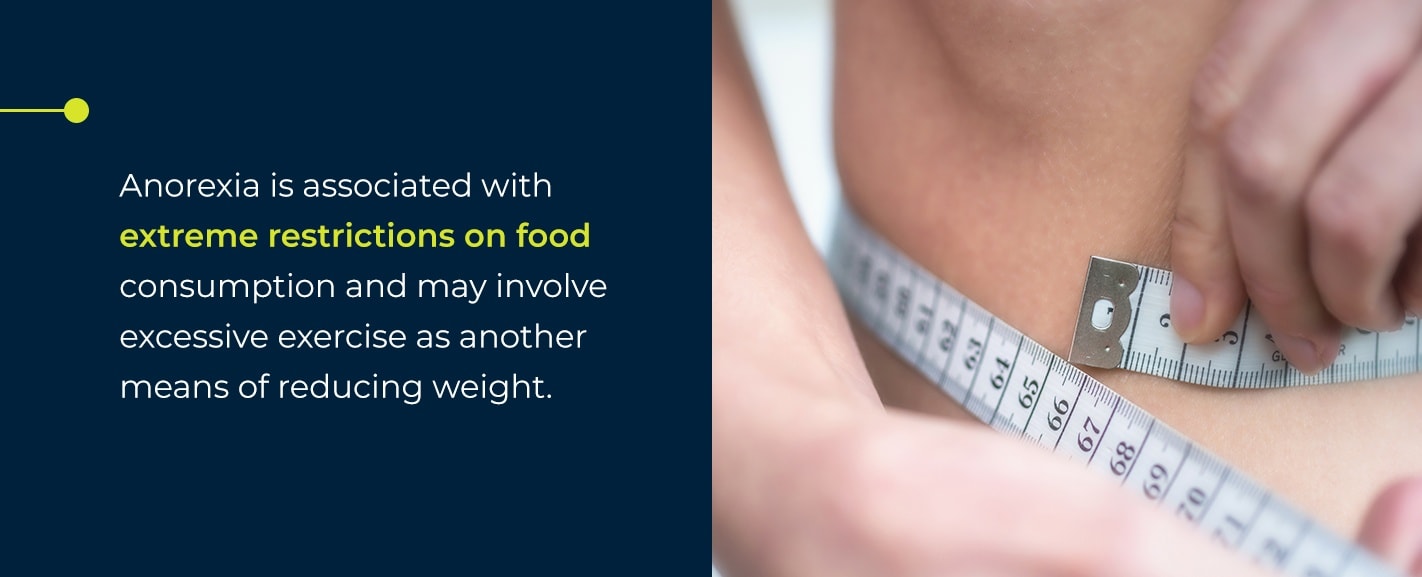
Bulimia
Bulimia nervosa involves frequent binges, during which a person eats very large amounts of food in one sitting. Binge-eating is followed by purging, in the form of forced vomiting or excessive laxative use in order to “make up for” the compulsive eating. Bulimia is less visually obvious than anorexia, as people with the condition may be any weight.
Bulimia is marked by feeling wildly out of control, and some people attempt to quell the associated anxiety with alcohol. One study even showed that bulimia and substance abuse may have a genetic component in common.
Binge-Eating Disorder
Binge-eating disorder is similar to bulimia in that it’s marked by episodes of excessive eating. However, there is no purging element, so people with this disorder are usually overweight. Almost 3% of people in the U.S. are affected by a binge-eating disorder at some point in their life.
Body Dysmorphic Disorder
Body dysmorphic disorder leads people to fixate on perceived flaws in their physical appearance. The flaws are often very minor and not noticeable to others, yet cause the sufferer immense shame and anxiety. People with this disorder often use drugs and alcohol to numb their anxiety about their appearance.
Avoidant Restrictive Food Intake Disorder
Avoidant restrictive food intake disorder (ARFID) is a diagnosis new to the DSM-5. Like anorexia, ARFID involves limiting the amount and type of food a person consumes. However, the motivations are different. Those with ARFID control food intake due to concerns about the food itself, such as unwanted textures. ARFID is commonly accompanied by anxiety, which may lead people to self-medicate with alcohol or drugs.
 Other Specified Feeding or Eating Disorder
Other Specified Feeding or Eating Disorder
When there are persistent issues with eating that cannot be explained by the diagnosis of another eating disorder, a person can be diagnosed with “other specified feeding or eating disorder”. About 40 percent to 60 percent of people seeking treatment for an eating disorder meet this diagnosis. Because it is something of a “catch-all” condition, many people make the mistake of thinking it is less severe than disorders like anorexia or bulimia. Symptoms of this disorder can be just as severe as any other eating disorder.
Groups Affected by Eating Disorders
For many years, it was assumed that eating disorders were a problem that only affected women. We now know that any person can develop an eating disorder and that different groups have different risk factors that may make them vulnerable. Some groups of people face unique challenges when it comes to eating disorders.
Young People
Adolescence is a challenging time for teens and young adults. They are often focused on their social network and hope to fit in with their peers. Kids and teens ages 8 to 18 spend about 7.5 hours a day engaged with media, which can influence their body image and what they perceive as the ideal body. Some are so deeply affected that they develop an eating disorder in their pursuit of the perfect appearance.
Women
Women do suffer from eating disorders at a much higher rate than men. One of the largest studies to date showed that women are more likely than men to struggle with fasting, binge-eating, induced vomiting and body checking. A full 65% of the respondents to a national survey of 4,000 women between the ages of 25 and 40 had “disturbed eating behaviors” that may contribute to an eating disorder, and another 10% reported symptoms like those found in binge-eating disorder, bulimia or anorexia.
Men
Despite social stigma and misconceptions that eating disorders only affect women, men can be deeply affected by eating disorders too. Up 10 to 20% of people with bulimia or anorexia, and up to 40 percent of people with binge-eating disorder are men. A key difference in men is that they are more likely to have depression in addition to their eating disorder. The combination of depression and an eating disorder may raise the likelihood of developing an addiction to substances that temporarily alleviate feelings of depression.
One of the more unique hallmarks of eating disorders in men is an obsession with muscle mass rather than weight loss. Muscle dysmorphia is sometimes known as “reverse anorexia” and is characterized by spending excessive time weightlifting and significant distress when unable to go to the gym. It may also result in disordered eating through special diets.
Athletes
Athletes are driven to perform in ways other people are not. While most sports require strength and power, some are also influenced by weight. Those who participate in sports where a person’s body weight affects their ability to achieve the best scores, such as cycling or ski-jumping, are particularly prone to eating disorders. One study found that overall, around 18% of female athletes have an eating disorder compared to only 5% of the general population. Studies on male athletes show similarly elevated rates of disordered eating.
Athletes also struggle with substance abuse at high rates. Recreational drug or alcohol use may be a result of stress, while abuse of performance-enhancing drugs may occur as an attempt to combat pressure from coaches. The combination of eating disorders and addiction in athletes is more common than many people think.
 LGBTQ+ Community
LGBTQ+ Community
The LGBTQ+ community is disproportionately affected by issues that erode both physical and mental health. Frequent discrimination and bullying can lead to body image problems that become the root of an eating disorder. Gay and bisexual men are more likely than heterosexual men to develop an eating disorder. Compared to less than 5% of heterosexual men, more than 15% of gay and bisexual men were found to have an eating disorder sometime in their lives.
Transgender people are at particular risk for eating disorders because their identity is already at odds with their body. As a transgender person attempts to change the way they look in order to better match their identity, they may develop an eating disorder more easily.
Risk Factors for Eating Disorders
There are a number of factors in a person’s life and history that may increase the chances of developing an eating disorder. Some factors are more influential than others.
1. Age
Eating disorders can develop at any age, but younger people are more susceptible. They are highly impressionable and can be influenced more easily by media and their peers.
2. Family history
People with a family history of eating disorders are more likely to develop one themselves. While this may be due to replicating observed behaviors, new research is suggesting that there is a genetic underpinning. One study of twins found that anorexia is 50 to 60% inheritable.
3. Excessive Dieting
The line between dieting and eating disorders is often thinner than it should be. Bouncing between fad diets or following an extreme version of one diet can lead to obsessive thoughts about controlling food intake, which can quickly spiral into a full-fledged eating disorder.
 4. Psychological Health
4. Psychological Health
Eating disorders are often accompanied by or caused by mental health issues. Some of the common factors include:
- Anxiety
- Depression
- Low self-esteem
- Impulsive behavior
Life changes that affect mental health can also be factors in the development of an eating disorder as well as an addiction. Things, like moving, getting a new job, the death of a loved one or starting a new relationship, can trigger behaviors that lead to an eating disorder.
5. Extracurricular Activities
Being part of a community where appearances matter can put pressure on a person that results in an eating disorder. Athletes, dancers, actors and more are generally expected to maintain a certain appearance, and the pressure from other people in the group can lead directly to disordered eating.
Shared Risk Factors and Characteristics Between Addiction and Substance Abuse
The feelings and behavioral tendencies that drive drug addiction and eating disorders have a lot in common. The shared risk factors include:
- Being susceptible to messages from media and advertisements
- Being subject to unhealthy social pressure and norms from peers
- Being exposed to unhealthy parental behaviors
- History of physical or sexual abuse
- Low self-esteem
- Depression or anxiety
Experiencing any of these risk factors elevates a person’s risk of developing either or both of these conditions.
Shared Characteristics
In addition to sharing risk factors, eating disorders and substance abuse are also similar in their characteristics. Both addiction and disordered eating are chronic diseases with high relapse rates. Some other characteristics they have in common include:
- Extreme preoccupation and compulsive behavior
- Cravings, rituals and secretiveness around the behavior
- Mood-altering effects
- Social isolation
- Need for intensive therapy
Both conditions are challenging to treat and can be life-threatening if intervention is not performed in time.
Trauma, Eating Disorders and Substance Abuse
The connection between trauma and addiction is a substantial one. Significant research has been done to help understand why people with drug and alcohol addiction are so likely to have a history including traumatic experiences. The largest study on the subject gathered data from more than 17,000 individuals. A key finding was that a child who experiences four traumatic events or more is five times likelier to become an alcoholic and up to 46 times likelier to become an injection-drug user than the general population. These individuals are also 60% more likely to become obese, suggesting a link between trauma and disordered eating.
Multiple types of trauma may be associated with eating disorders, including:
- Neglect
- Sexual assault or harassment
- Physical abuse and assault
- Emotional abuse
- Bullying
While science has not uncovered the specific mechanism by which trauma triggers eating disorders, we do know that trauma disrupts normal activity in the nervous system. This makes it more challenging for people to manage emotions, and they may attempt to exert control over them by turning to disordered eating or substance abuse. Sexual trauma is particularly disruptive as it often causes serious body image issues and makes people overly self-critical.
 Concurrent Treatment for Substance Abuse and Eating Disorders
Concurrent Treatment for Substance Abuse and Eating Disorders
In many cases, people struggling with addiction and co-occurring conditions like eating disorders focus solely on substance abuse while thinking of other disorders as secondary. This is often because substance abuse has produced the most drastic negative impact on a person’s life, leading to issues such as job loss or destroyed relationships. Eating disorders are frequently left by the wayside as people seek treatment for addiction, but the best course of action is to seek out programs that specifically treat people with a dual diagnosis.
Treating only addiction when there are concurrent or underlying conditions like trauma or an eating disorder does not fully address the core of the issue. For someone to overcome addiction, any and all other conditions must be addressed at the same time. If someone with alcoholism and binge-eating disorder gets treatment for addiction only, they may continue binge-eating and renewing impulsive behaviors that reinforce the addiction.
People receiving treatment for multiple conditions at once should consider residential inpatient treatment for the best chance of beginning a successful recovery. When eating disorders are involved, it’s extremely challenging to make good decisions about food on top of staying sober. The 24/7 care and support provided in residential treatment ensures participants stay on track, enabling them to get the most out of treatment.
 Types of Treatment
Types of Treatment
Treatment for addiction and eating disorders differs in the specifics, but therapy is the cornerstone of recovery from any mental health disorder. These are some of the types of therapy that may be used in concurrent treatment for eating disorders and addiction.
Acceptance and Commitment Therapy (ACT)
ACT helps patients by placing the focus on actions instead of feelings and thoughts. Patients learn to identify the values most important to them and then create goals that correspond to those values. ACT teaches people that uncomfortable emotions like anxiety are normal, but should not be all-consuming. This form of therapy encourages people to disentangle themselves from emotions to some extent and commit to living a life aligned with their goals. Positive actions, in turn, generate positive feelings, creating a loop that reinforces itself.
 Cognitive Behavioral Therapy (CBT)
Cognitive Behavioral Therapy (CBT)
Cognitive-behavioral therapy is one of the most widely used forms of therapy for addiction and eating disorders. CBT examines how a person’s thoughts, attitudes and beliefs impact emotions and behavior. It is a short-term intensive therapy that operates on three principles:
- Psychological issues are based partly on illogical or unhelpful thinking.
- Psychological issues are partly based on learned, unhelpful behavioral patterns.
- People can improve their mental health by finding better ways of coping with emotions and building new behavioral patterns.
CBT helps prevent relapse and gives patients tools to cope with the many stressors that can trigger cravings. CBT is also useful for people with trauma underlying their addiction or eating disorder.
Dialectical Behavioral Therapy (DBT)
Dialectical behavioral therapy is a variation on CBT that is highly effective for eating disorders but can also be used to treat any other mental illness in which the goal is to reduce unwanted behaviors. DBT consists of four distinct elements.
- Mindfulness: Patients learn to access emotions they would normally remain unaware of, and learn how to regulate these thoughts when they are discovered. Mindfulness also helps people shift their attention when it is focused on something unhelpful.
- Distress tolerance: Learning how to accept and endure negative emotions gives people another option for avoiding a relapse to substance abuse or disordered eating.
- Emotional regulation: People learn how to identify and validate their emotions while reducing vulnerability to negative emotional states.
- Interpersonal effectiveness: Recovery is difficult when someone has low self-esteem or is unduly concerned with pleasing others. This facet of DBT focuses on building and maintaining relationships as well as healthy respect for oneself.
There are many other forms of therapy that may be used in a treatment program. A good program offers multiple forms of therapy so that each individual receives care that is best suited to their needs.
Evidence-Based Treatment at Gateway
People suffering from eating disorders and addiction are fighting against a potentially deadly combination of conditions that can cause permanent damage to the body if not treated as soon as possible. For the most effective treatment, people with co-occurring disorders should seek dual diagnosis treatment like the programs offered by Gateway.
At Gateway, we understand the complexities of initiating recovery from eating disorders and drug or alcohol addiction. With medical care and a variety of therapeutic services, we treat the whole individual with consideration to every person’s unique background and circumstances. Whether you need anorexia and alcoholism treatment, bulimia and substance abuse treatment or are struggling with another combination of disorders, Gateway is here to help. Through evidence-based treatment, you or someone you care about can begin to recover from a dual diagnosis. To learn more about how Gateway can help, call 877.505.4673 or contact us online.

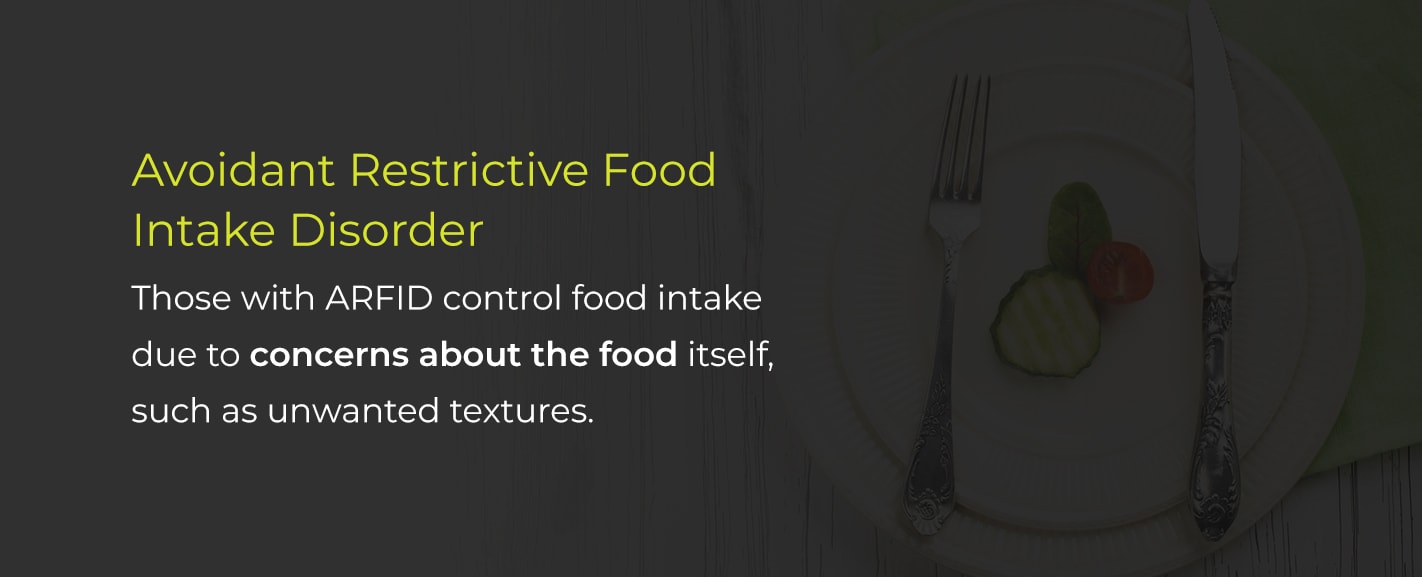 Other Specified Feeding or Eating Disorder
Other Specified Feeding or Eating Disorder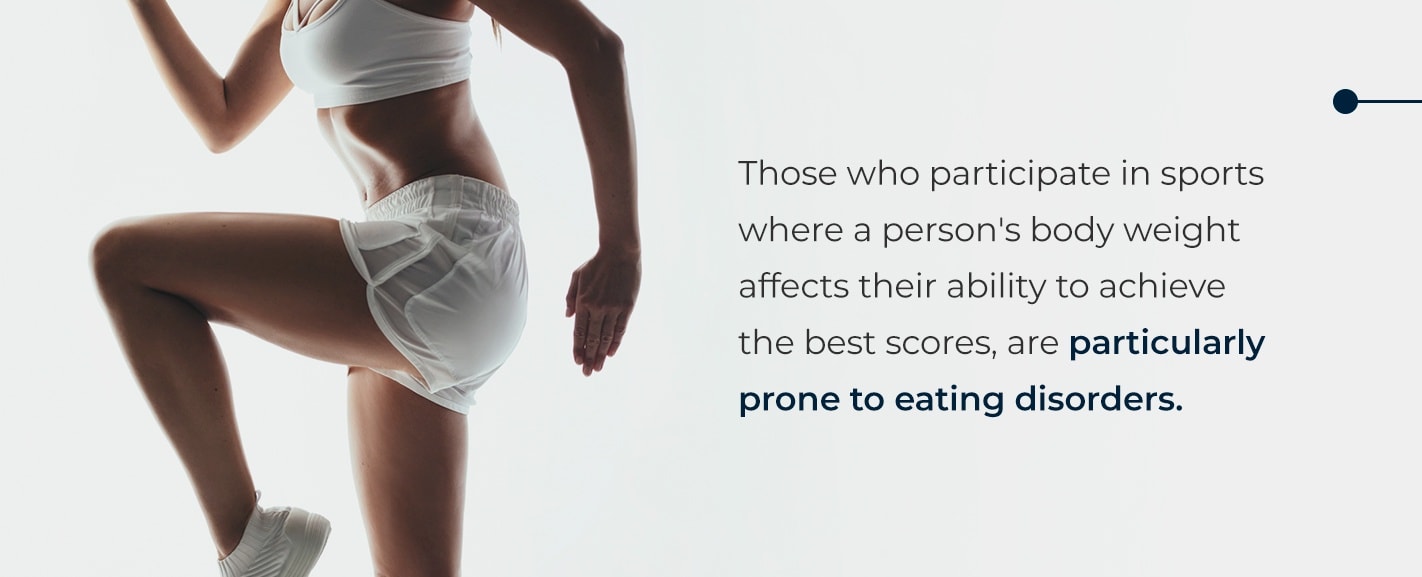 LGBTQ+ Community
LGBTQ+ Community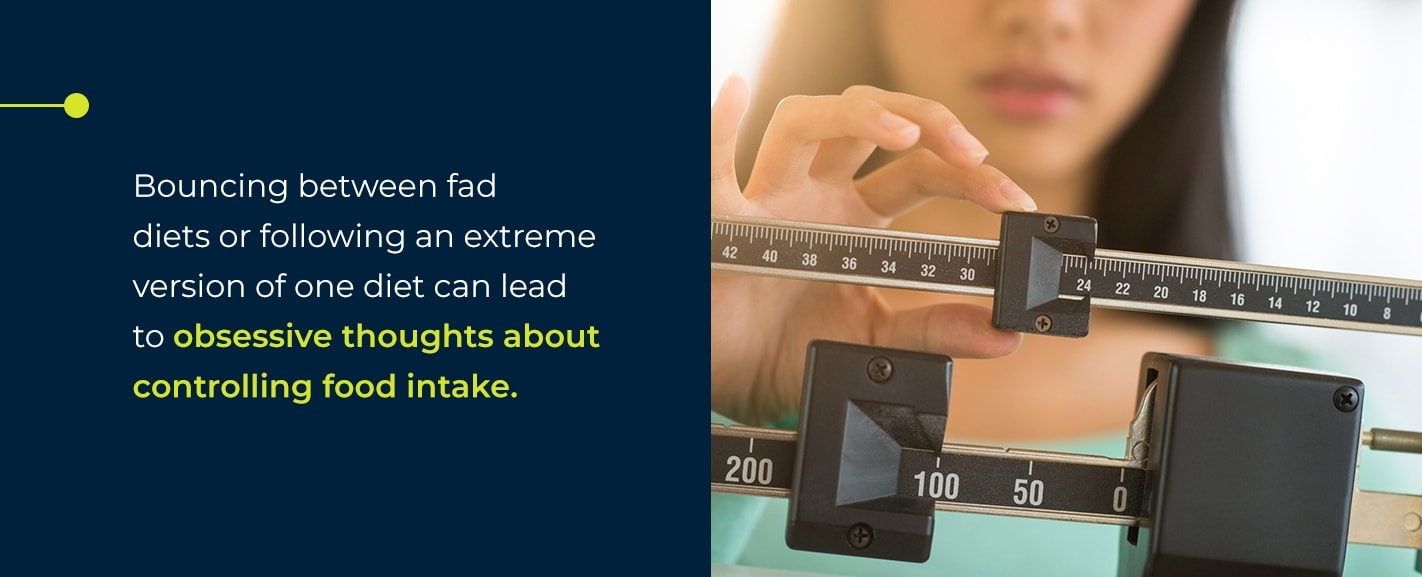 4. Psychological Health
4. Psychological Health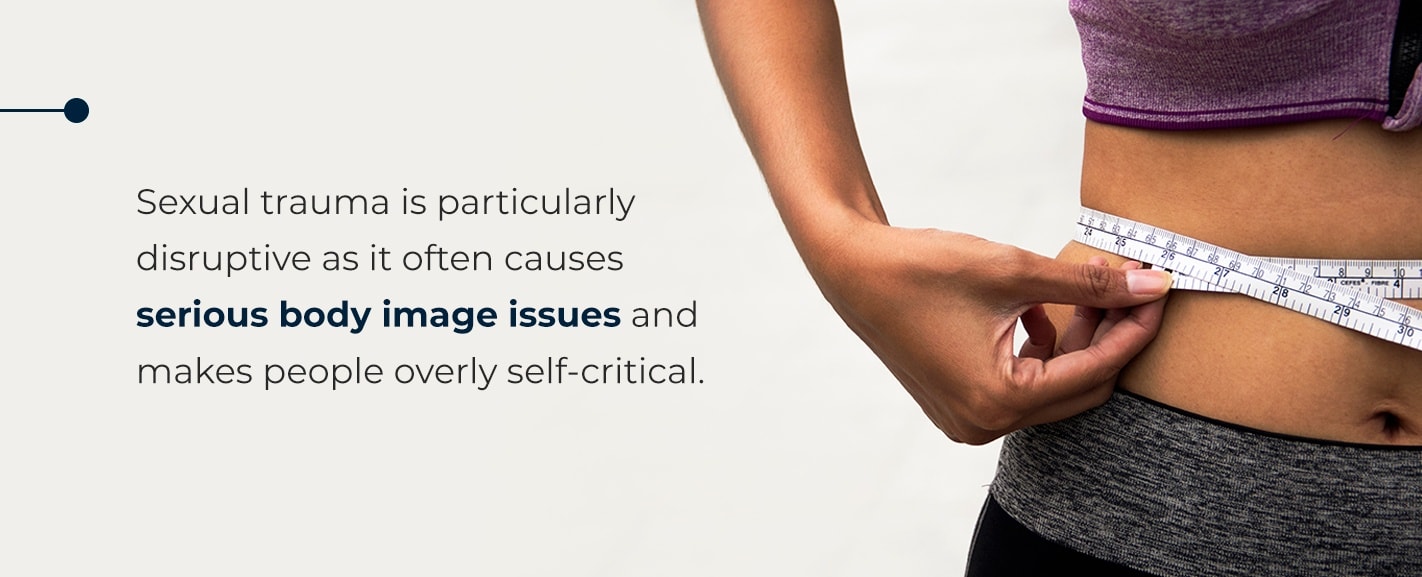 Concurrent Treatment for Substance Abuse and Eating Disorders
Concurrent Treatment for Substance Abuse and Eating Disorders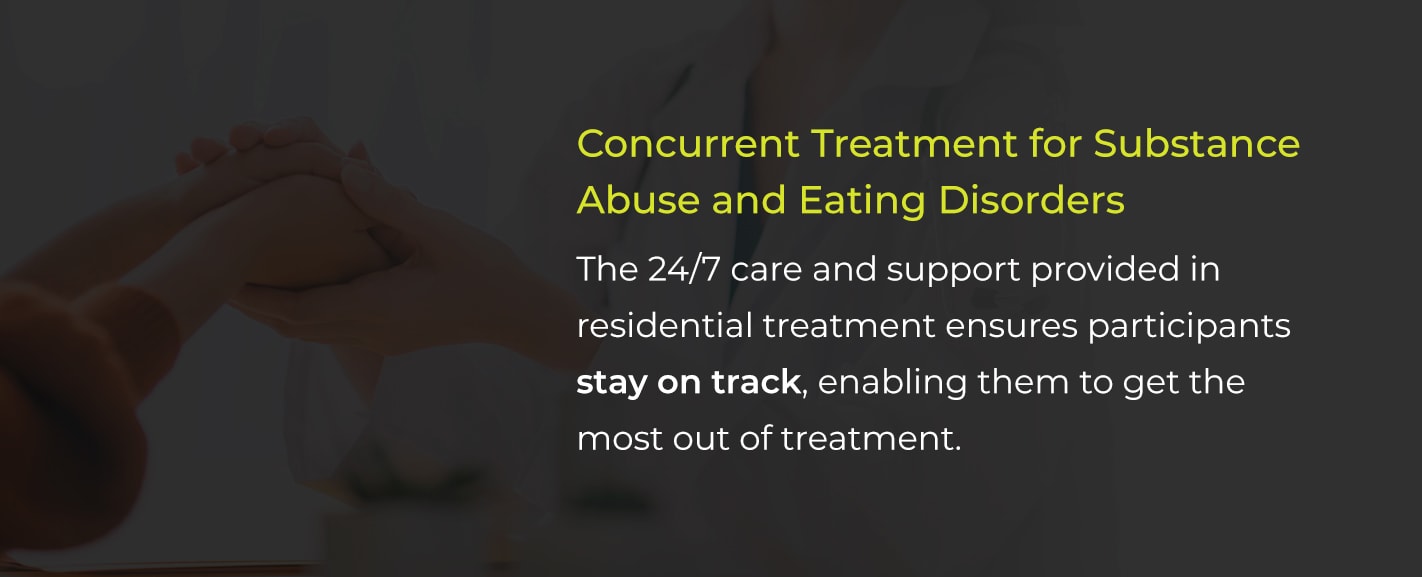 Types of Treatment
Types of Treatment Cognitive Behavioral Therapy (CBT)
Cognitive Behavioral Therapy (CBT)